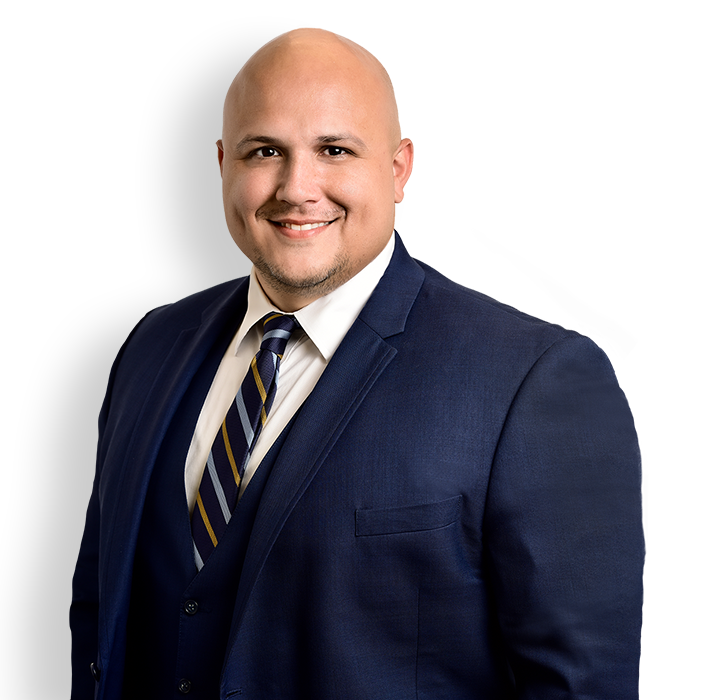California Announces Proposal for Important Changes to the Medi-Cal Delivery System

On October 28,2019 the California Department of Health Care Services (the “Department”) released the Medi-Cal Healthier California for All (formerly known as CalAIM) initiative. Recently, in support of the Department’s initiative, Governor Newsom released his proposed 2020-21 state budget which includes a large investment in the initiative. In particular, the proposed budget includes $695 million (including federal funds) in 2020-21 for the initiative, growing to $1.4 billion per year in 2021-22.1
The Medi-Cal Healthier California for All initiative seeks to implement broad delivery system, program and payment reform across the Medi-Cal program. This initiative reflects the Newsom Administration’s desire to use Medi-Cal to address a variety of issues facing California’s most vulnerable residents, such as homelessness, children with complex medical conditions, the increasing need for access to behavioral health care services and for services for formerly incarcerated individuals, and to address the growing age populations. The initiative also provides the framework for upcoming waiver renewals and program and payment reforms across the Medi-Cal program. In short, Medi-Cal Healthier California for All reflects the future of the Medi-Cal delivery system and will have broad ranging impacts for Medi-Cal providers and California’s 13.5 million Medi-Cal beneficiaries.
Medi-Cal Healthier California for All’s Overarching Goals and Proposals
The proposed plan under this initiative includes a number reforms affecting Medi-Cal managed care, long-term care, behavioral health, and other county programs and services. The Department’s nearly 180 page Medi-Cal Healthier California for All Proposal sets forth three overarching goals and specific proposals to achieve these goals.2
Goal 1: Identify and manage member risk and need through Whole Person Care approaches and addressing the Social Determinants of Health. Related proposals include:
• Medi-Cal managed care plan (“MCP”) incentive payments linked to investment in Enhanced Care Management and In Lieu-of Services (“ILOS”) infrastructure. MCPs would need to partner and share the incentive payments with providers.
• MCP coverage of a statewide Enhanced Care Management benefit to address clinical and non-clinical needs of beneficiaries.
• MCP coverage of ILOS, which are flexible wrap-around services provided as a substitute to other Medi-Cal covered services such as ER utilization through integration with Care Management.
• Transition the current Health Homes Program and Whole Person Care pilots to a statewide benefit.
Goal 2: Move the Medi-Cal program to a more consistent and seamless system by reducing complexity and increasing flexibility. Related proposals include:
• Full integration plans, which \would cover physical health, behavioral health, and oral health under one contracted entity.
• Standardization the benefits that are provided and the populations enrolled through MCPs statewide.
• Regional Rates for MCPs.
• Transition to Statewide Managed Long Term Services and Supports (MLTSS).
• Behavioral Health proposals, including administrative integration of specialty mental health and substance use disorder services into one behavioral health managed care program.
Goal 3: Improve quality outcomes and drive delivery system transformation through value-based initiatives, modernization of systems, and payment reform. Many of the proposals incorporated throughout the initiative relate to this goal to improve quality outcomes.
Renewal of Medi-Cal 2020 Waiver Programs through a new 1915(b) Waiver
As mentioned above, the Medi-Cal Healthier California for All initiative also contemplates the renewal and transformation of Medi-Cal 20203 waiver programs. For a variety of reasons, including the Centers for Medicare and Medicaid Services’ (“CMS”) guidance that the State can no longer consider savings generated from the shift from fee-for-service (“FFS”) to managed care in calculating budget neutrality, the Department is transitioning a number of important programs away from the Section 1115 waiver.4 Programs which will transition from the Section 1115 waiver include:
| Medi-Cal 2020 Program | Transition | Date |
| Medi-Cal Managed Care Waiver | 1915(b) waiver | January 1, 2021 |
| Whole Person Care Pilots | 1915(b) waiver | January 1, 2021 |
| PRIME payments | Allowable directed payments under the Designated Public Hospital Quality Incentive Program (QIP) | July 1, 2020 |
| Coordinated Care Initiative and Cal MediConnect | Managed Care benefit Statewide (for all dual eligible beneficiaries) | January 20235 |
| Drug Medi-Cal Organized Delivery System (DMC-ODS) | Expenditure authority for residential treatment will remain in the 1115 waiver, but services and delivery system will move to the new 1915(b) waiver | January 1, 2021 |
| Community-Based Adults Services (CBAS) | 1915(b) waiver | January 1, 20121 |
As demonstrated above, a number of current waiver programs under the Medi-Cal 2020 waiver are transitioning to a Section 1915(b) waiver. The Section 1915(b) waiver provides states with the flexibility to modify their delivery systems by allowing CMS to waive statutory requirements for comparability, statewideness, and freedom of choice. States typically use this type of waiver to implement their managed care programs. The Department’s proposal to use the Section 1915(b) waiver thus reflects an expansion of the Medi-Cal managed care delivery system, and the continued predominance of this delivery system in California.
Finally, waiver renewal is an iterative process involving ongoing negotiations with CMS. This means that, while the initiative sets forth specific proposals, the final proposals are subject to further negotiations and CMS approval.
Long-Term Care
There are a number of significant developments for Long Term Care (“LTC”) and other post-acute providers.
First, the Department plans to carve in Long Term Care (“LTC”), including skilled nursing facilities, subacute facilities, pediatric subacute facilities, and intermediate care facilities, to all MCP model types by January 1, 2021. Currently, these services are only required to be carved into County Organized Health Systems (“COHS”) and counties participating in the Coordinated Care Initiative (“CCI”)/Cal MediConnect. Medi-Cal Healthier California For All would make this a mandatory state-wide managed care benefit by carving LTC into the remaining Medi-Cal MCP models.
Second, the Department proposes for Medi-Cal managed care plans to be prepared to provide managed long-term services and supports (“MLTSS”) statewide by 2026. Currently, these services are carved into CCI.
Third, we expect there to be significant changes to LTC reimbursement. Currently, the state provides annual cost-based increases and quality incentive payments to SNFs, funded in part by a Quality Assurance Fee based on facility revenues. The current framework, which was authorized initially in 2004, sunsets July 31, 2020. The Governor’s proposed budget would move away from a primarily cost-based reimbursement methodology for SNFs. Further, current California law includes a rate floor for certain LTC providers. While there was some uncertainty as to if an how this rate floor will be carried over to managed care, the Department recently clarified that it is proposing to require plans to pay and LTC providers to accept the applicable Medi-Cal FFS rates, unless the parties mutually agree to an alternative reimbursement methodology.6
The above are significant developments for LTC and post-acute providers across the state. MCPs will be compelled to contract with these providers in order to meet network adequacy and network certification documentation requirements. Similarly, we expect that certain LTC providers will be incentivized to join MCP networks in order to receive Medicaid managed care supplemental payments, called “allowable directed payments.” We are closely monitoring LTC developments and plan to publish a separate client alert with more detail. In the meantime, last week DHCS published guidance on Frequently Asked Questions related to the Long-Term Care Carve In that provides additional insight into the Department’s
Behavioral Health and Substance Use Disorder (“SUD”) Treatment
Governor Newsom’s proposed budget specifically addresses behavioral health care, providing that county-operated behavioral health systems would receive $45 million in the 2020–21 budget to implement a Behavioral Health Quality Improvement program that would prepare the counties for changes under Medi-Cal Healthier California for All, which include a number of important proposed reforms to the Medi-Cal behavioral health payment methodologies. The Newsom Administration also revealed plans to form a task force to both improve California’s behavioral health system and to enforce behavioral health parity laws.
Briefly, Medi-Cal Healthier California for All’s proposals include transitioning reimbursement for all inpatient and outpatient specialty mental health and SUD services from the current Certified Public Expenditure (“CPE”)-based methodologies to other rate-based/value-based structures that utilize intergovernmental transfers. This would necessarily involve several stages: First, to establish payment rates, the Department proposes to transition specialty mental health and SUD services from existing
Healthcare Common Procedure Coding System (HCPCS) Level II coding to Level I coding. Second, the Department would establish reimbursement rates for the updated codes, eliminating the need for reconciliation to actual costs. The Department also proposes a path for counties to provide and be paid for services to meet a beneficiary’s mental health and SUD needs prior to a particular provider determining whether the beneficiary has a covered diagnosis.
In addition to payment reforms, the Department also proposes administrative integration of specialty mental health and SUD services into one behavioral health managed care program with the dual goals of improving outcomes through coordinated treatment and reducing administrative and fiscal burdens for counties, providers, and the State. Similarly, the Department is interested in promoting regional approaches, as opposed to only county-by-county approaches, to administer and deliver specialty mental health and SUD services. This is intended to assist counties that may have resource limitations, but could potentially pool resources with neighboring counties to develop regional delivery systems.
The Department also proposes to modify the existing medical necessity criteria for both outpatient and inpatient specialty mental health services in order to align with State and federal requirements and to standardize the benefit statewide.
Next Steps
The summary above is a high-level look at Medi-Cal Healthier California for All and California’s waiver renewal. Throughout early 2020, the details of the Department’s proposals will be clarified through extensive stakeholder engagement for both the initiative and the renewal of the state’s Section 1115 and the 1915(b) waivers. The stakeholder workgroups are open to the public, which means that interested parties may attend and/or submit written comments to the Department. We encourage providers to actively participate in the implementation of the initiative given the impact that any final changes to the Medi-Cal program will have on healthcare delivery and reimbursement for providers serving Medi-Cal beneficiaries.7
We are closely monitoring the initiative and will be conducting informational sessions appraising providers throughout the state of important and new developments as this process unfolds.
For further information, please contact Alicia Macklin, Paul Garcia, or Lloyd Bookman in our Los Angeles office, Mark Reagan or Stephanie Gross in our San Francisco office, or your regular Hooper, Lundy & Bookman contact.
___________________________________
[1] http://www.ebudget.ca.gov/2020-21/pdf/BudgetSummary/HealthandHumanServices.pdf.
[2] https://www.dhcs.ca.gov/provgovpart/Documents/6422/Medi-CalHealthierCAforAllProposal.pdf.
[3] Medi-Cal 2020 is the Department’s current Section 1115 waiver.
[4] Certain programs, like the Global Payment Program, will be in the Section 1115 waiver.
[5] There are a number of interim steps proposed prior to the full transition statewide.
[6] See FAQ, No. 11, http://calduals.org/wp-content/uploads/2020/01/1-23-20-LTC-Carve-In-FAQ-FINAL.pdf.
[7] Workgroup schedules, as well as materials related to the Department’s initiative, are available at: https://www.dhcs.ca.gov/provgovpart/pages/medi-calhealthiercaforall.aspx.




